Trees Birds Mammals Fish Amphibians Reptiles
Wild Algarve
Bookshop
Dryas octopetala - Mountain Avens
Phylum: Magnoliophyta - Class: Equisetopsida - Order: Rosales - Family: Rosaceae
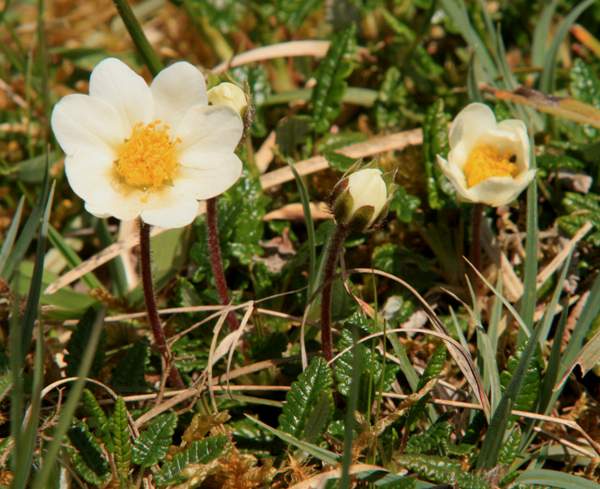
This arctic-alpine plant is a member of the Rose faily, as are other wildflowers bearing the common name 'avens'; however, it is not in the same genus as the various Geums such as Water Avens and Wood Avens. Dryas octopetala often grows on cool open slopes and survives the harshest of winters; not so surprisingly, therefore, it is the national flower of Iceland.
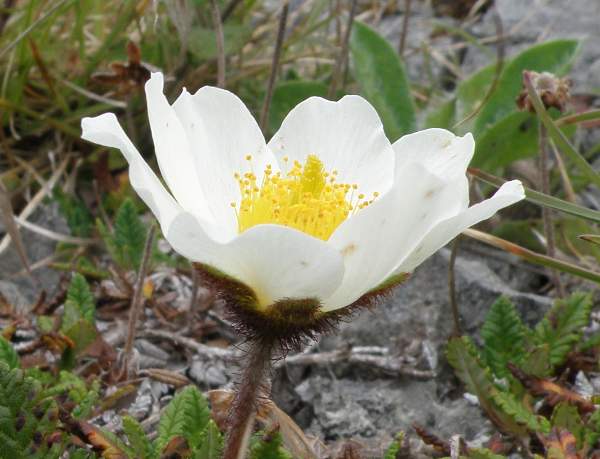
Description
Mountain Avens produces ground-hugging mats rarely more than 10cm tall. The lovely five-petalled (occasionally more than five) flowers produce spiralled siky seed heads than eventually open and are dispersed on the wind. Its solitary dark-green prostrate leaves are slightly lobed; they are smooth on the upper surface but tormentose (covered with fine white hairs) beneath.
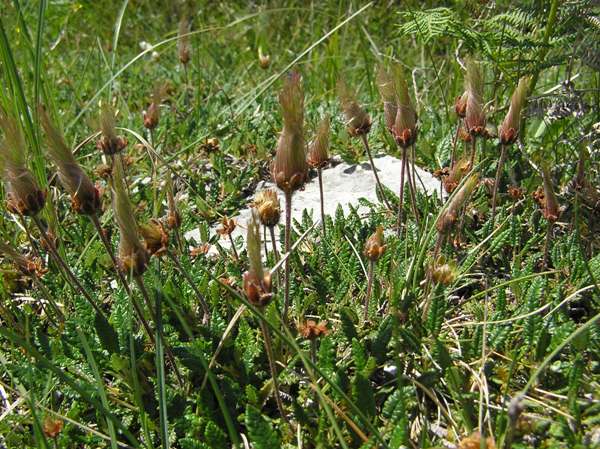
Above: seed heads of Mountain Avens
Distribution
Dryas octopetala is mainly found in mountainous areas from Scandinavia and Iceland down to cetral mainland Europe. In Britain this lovely wildflower occurs sparsely in the Pennines and parts of Snowdonia, and it is more plentiful in the Highlands of Scotland. In south-west Ireland Mountain Avens grows right down to sea level on The Burren, and it is recorded from a few other limestone-rich locations.
In North America this wildflower is found on glaciated parts of Alaska; it also occurs in the Rocky Mountains, from Canada right down to Colorado.
The pictures of Mountain Avens shown on this page were taken in Ireland's famous Burren limstone region during June and early July.
Habitat
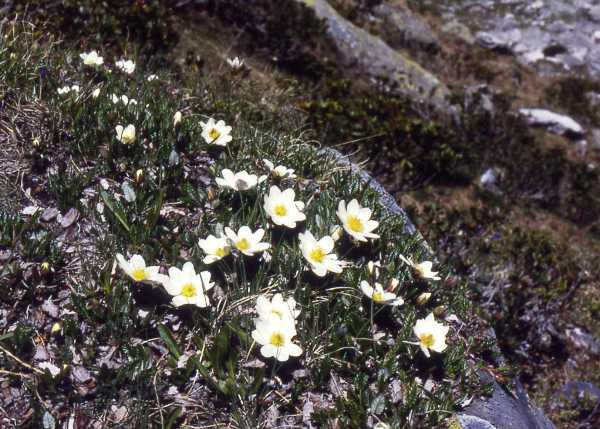
Mountain Avens is a wildflower of fast-draining calcareous regions and is mainly found in shallow soils among limestone outcrops.
Blooming Times
The flowers of Mountain Avens appear in late spring and early summer.
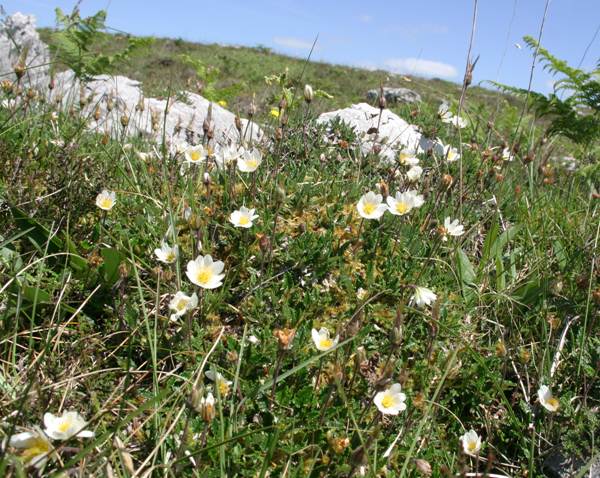
Etymology
Dryas, the genus name, comes from Greek and refers to the fact that the leaves are shaped rather like those of an Oak: dryads, the nymphs of the woods, have long been associated with Oak trees. The specific epithet octopetala comes from Latin: octo- means eight, and -petala means petal. Although the flowers usually have eight petals, it is not unusual to find flowers with 16 petals, eight petals backed by an additional eight and so looking like 'doubles'.
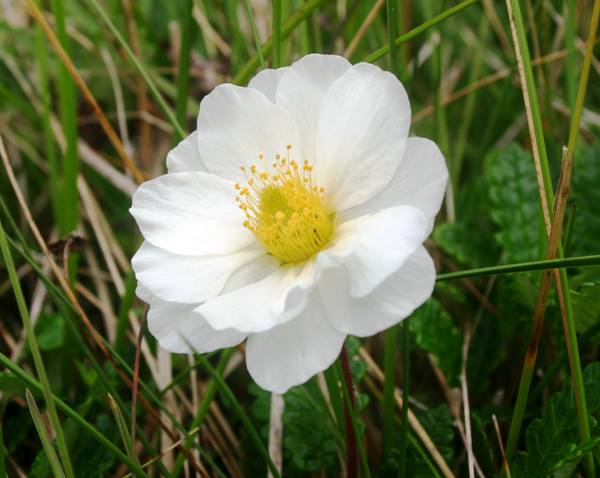
Above: this Mountain Avens flower has 16 petals, not all of which are visible in the picture.
Sue Parker's latest ebook is a revised and enlarged edition of Wild Orchids in The Burren. Full details here...
Buy it for just £5.95 on Amazon...
Sue Parker's new ebook is a comprehensive and fully revised edition of her acclaimed field guide to the Wild Orchids of Wales. Full details here...
Buy it for just £5.95 on Amazon...
Please Help Us: If you have found this information interesting and useful, please consider helping to keep First Nature online by making a small donation towards the web hosting and internet costs.
Any donations over and above the essential running costs will help support the conservation work of Plantlife, the Rivers Trust and charitable botanic gardens - as do author royalties and publisher proceeds from books by Pat and Sue.